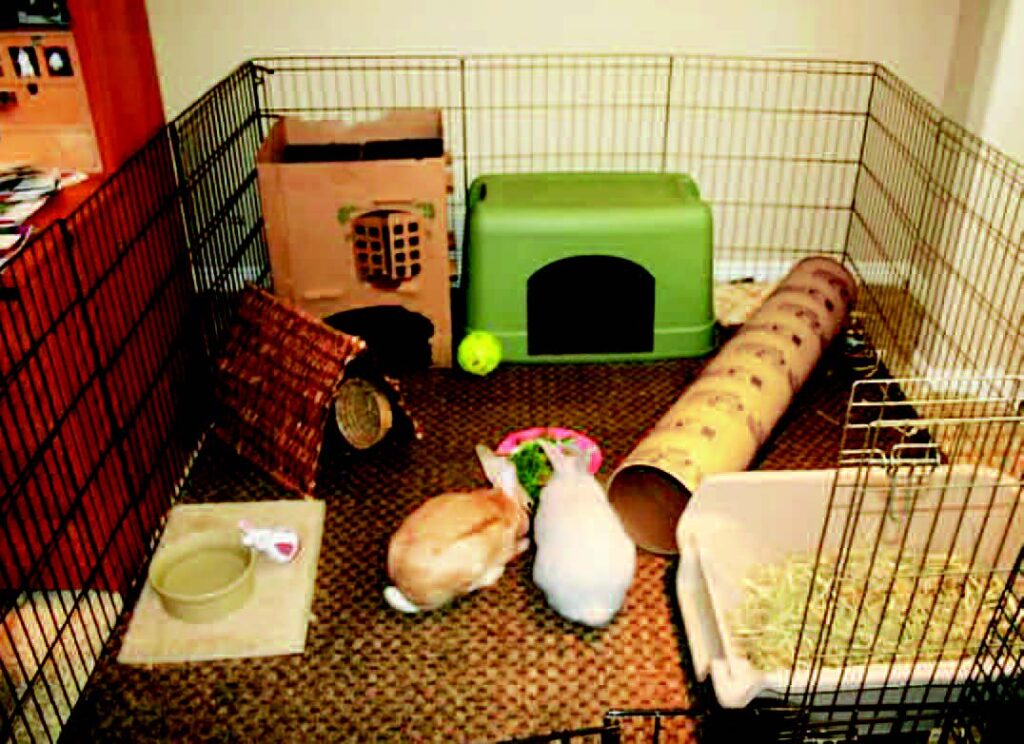Free-running rabbits do not necessarily have unrestricted access to the entire house. There may be one or several rooms that are off limits, depending on how much bunny proofing you have done. This is not a denial of freedom. Bunnies often limit themselves. For many years I had free-running rabbits in the living room. There was no fence to keep them there, but they had no desire to go anyplace else. That was home.
Shared rooms: The most popular shared rooms for rabbits and their humans are dining rooms, studies, family rooms, and living rooms. A bedroom can be good place to share; but if you have extra shy bunnies, they may hang out under the bed, and you will never see them. If you want to socialize with them frequently, you might think of a more interactive room. On the other hand, bold and boisterous bunnies may enjoy bouncing around on top of your bed.
Dedicated rooms: If you want to set up a dedicated bunny room, make sure that the occupants have companions and that it’s near human activity. Use a baby gate or see-through fencing. Don’t have a solid closed door between you and your bunnies.
Pens are the preferred modern rabbit housing option.
Cages: When And How To Use Them
A cage is not a home in itself. It can, however, be part of a more extensive housing plan. With a door opening into a large pen with ramps, tunnels, and exercise equipment, the cage becomes simply a place to go for quiet time.
To provide comfortable resting space, the cage should be three–four times the (stretched-out) adult body-length. Remember this if you now have a baby bunny in a starter cage.
Two-story condos, connected by a ramp or a step-up, can add space within the same footprint. However, all cages and condos should be thought of only as bunny bedrooms, not as their entire play space. A condo can be expanded easily by attaching a pen to it that adds play space.
“The smaller the cage, the more time was needed outside it.”
Use a small cage only if you have open-door policy. That is, keep it in a large bunny-safe area with the door always open so that the bunny truly chooses when to be in it. The cage should have large front⁄side-opening doors. If it includes a top door, be certain that it clamps securely from the outside, so that it can’t be pushed up from inside the cage (posing a risk of strangulation).
Although we try to allow our bunnies all the freedom possible, cages should be closed when used as sick beds for ill or injured bunnies. I have a cage set-up in my bunny room, where I can confine a bunny with a back injury or keep a hypothermic bunny warm. It’s also easy to drape a sheet over it and use it with a vaporizer.
In the past, we were asked how much un-caged time should the bunny have. The rule was that the smaller the cage, the more time was needed outside it. While we still may differentiate between resting space and running space, the two are now more often merged, with the use of adjacent exercise pens and larger spaces.
©Copyright Marinell Harriman. All Rights Reserved. Republished with the permission of the author.
Living Space: How to set it up was originally published in House Rabbit Handbook (5th ed.).

